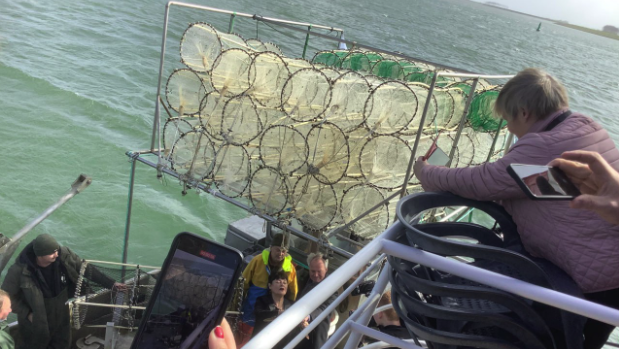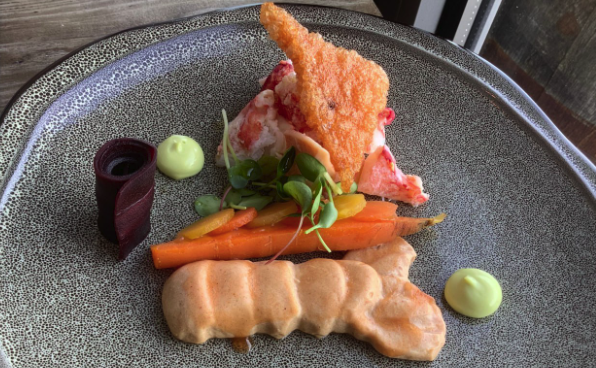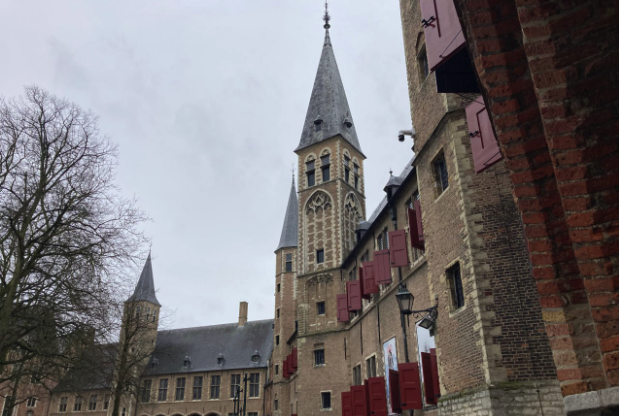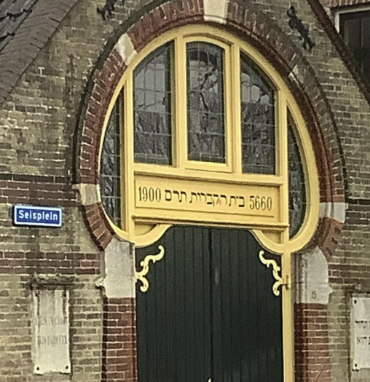Tucked in between the most visited cities of The Netherlands (viz., Amsterdam) and Belgium (Flanders), sits a region that has been relatively under the tourism radar – but which certainly deserves wider recognition, for its gastronomy, charm, and vivid glimpses into fascinating history.
Read More:
This coastal area known as Zeeland – Land of the Sea – is indeed aptly named, since not only is it located directly on the southern edge of the North Sea, but also most of its territory is indented with numerous inlets and canals. In fact, much of Zeeland’s wetlands and land mass sit at – or even below – sea level.
As a consequence, Zeeland’s geography — as well as its geopolitical strategic importance – has shaped the livelihood of its inhabitants for centuries. Prior to and during the age of colonialism, its convenient access to the broad reaches of the North Sea, combined with its proximity to the mouth of the English Channel, made it a crossroads of maritime trade, leading its cities to become prosperous and cosmopolitan municipalities.
Today, these same population centers are less known for their seaports (in comparison with Rotterdam to the north, for example, or Antwerp to the south) than for the province’s rich bounty of food originating in its generous waters: namely, fresh and desirable fish and seafood caught, cultivated and farmed by the industrious inhabitants of modern-day Zeeland.
This season of the year, in particular, is when the pride of Zeeland’s crustaceans comes to the fore: the Eastern Scheldt lobster, praised as one of the world’s most delectable delicacies emerging from the sea. This renowned lobster, alongside famed homegrown varieties of oysters, is what can arguably justify crowning Zeeland as the unofficial “seafood capital of Europe.”
Thus, it was this writer’s great fortune to be invited to the inauguration of the 2023 Eastern Scheldt lobster season – not only for the sheer culinary delights afforded, but also for the opportunity to get to know a province that is rich as well in history, architectural beauty and a heritage of freedom.
Our odyssey began in the picturesque town of Zierikzee, bisected by a canal that connects the small city to the Eastern Scheldt – a former estuary whose protected waters now spawn a regal lobster. The Eastern Scheldt is also the centerpiece of its eponymous national park, the largest in The Netherlands.
The Stadthuis – town hall – of Zierikzee is definitely worth a visit, for both its exterior appearance and the interesting museum within. More importantly, Zierikzee deserves consideration as a base for exploring Zeeland because of its Hotel Mondragon, a luxurious boutique hotel with all the amenities for a comfortable stay.
Also on the premises of the Mondragon is Restaurant Cristo, a fine dining establishment combining the best of local cuisine with the culinary traditions of France and – most intriguingly – Basque country. Cristo is also a member of the Eastern Scheldt Lobster Circle, a select group of restaurants highlighting lobster dishes.
For those who do not eat shellfish, you are still in luck. There is an abundance of kosher fresh fish from the cold waters of the North Sea, including flavorful specimens not often found in Israel, such as sole, in addition to herring, mackerel, and cod.
Lobster season in Zeeland starts officially on the last Thursday in March and ends on the 15th of July. The day of the ceremonial first lobster catch is practically a holiday in the region: the event organized by the Foundation for the Promotion of Eastern Scheldt Lobster was attended by a virtual Who’s Who of Zeeland, who gathered onboard a luxury yacht and were feted with Moet & Chandon champagne and oysters as the ship sailed into open waters.
Even the weather seemed to be in the mood to cooperate: as the appointed hour in the early afternoon approached, the sun broke through the cloud cover and shone on the proceedings. The indefatigable chairwoman of the foundation, Nelleke Launspach, descended onto the lobster fishing boat, held aloft the first lobster catch of the season, and announced the name of the inaugural crustacean: Peter.
The toasts in honor of the now famous lobster continued as the boat headed to Delta Marina and a festive premier lunch comprising three courses prepared by a trio of Zeeland’s leading chefs (including one with a Michelin star), two of which gave the lucky invitees their initial tastes of this year’s lobster. To our delight, we discovered that all the hype is justified: living up to its billing, the Eastern Scheldt lobster is the most succulent specimen of the species this writer has ever tasted.
There is still time to indulge in Eastern Scheldt lobster this year – or to plan a trip for next year. In fact, June or July may be the best months to visit, as the weather could still be on the cool side in April and May. As the summer progresses, the tourist season might start to make things a bit crowded, as Zeeland’s beaches are some of the closest to major cities in western Germany.
No doubt all the restaurants belonging to the aforementioned Circle are worthy, but definitely recommended are the Strand Restaurant Our Seaside, situated on an expansive beach, and De Kleine Toren van Baarland, located inside a repurposed former church. Both places also serve excellent oyster appetizers, in addition to the trademark lobster.
It is also worth noting that all of this excellent seafood is best accompanied by award-winning local white wine. It was a real eye-opener to discover De Kleine Schorre, a world-class winery whose vineyards adjoin a traditional Dutch windmill, and two of whose vintages have been selected by Air France/KLM to be served to their Business Class passengers.
Finally, no visit to Zeeland would be complete without experiencing Middelburg, the provincial capital, and the city most conveniently connected by train with Amsterdam and the rest of Holland. Interestingly, however, the international airport closest to Zeeland is actually Brussels, Belgium.
Middelburg is a city rich in history, which grew so affluent as a center of trade – and especially the importation of wine from southern Europe and subsequent distribution throughout northern Europe – that it merited mention in Chaucer’s Canterbury Tales. Many of the historic merchant homes have been preserved, and can be observed while meandering along the banks of the city’s canals and on the fringes of a downtown populated by magnificent churches and tantalizing shops.
In the heart of the city sits Abbey Square, undoubtedly one of Holland’s most impressive, and also the home of Zeeuws Museum, which is unlike any you may have visited before. It is not one of those usual places characterized by paintings hung on the walls, but rather full of unexpected artifacts, ranging from wooly mammoth bones to Roman antiquities (yes, the Romans reached as far as the Netherlands), and unusual works of art — from the world’s largest collection of tapestries depicting naval battles to huge, stunning wall hangings crafted entirely from seashells.
In addition, there is the less tangible but hugely symbolic title of the City of the Four Freedoms, where this special awards ceremony is held every other year, alternating with New York. These fundamental freedoms were enunciated in the 1941 State of the Union address of President Franklin D. Roosevelt, whose ancestral family hailed from Zeeland.
The said freedoms are Freedom of Speech/Expression; Freedom of Religion/Worship; Freedom from Want/Hunger; Freedom from Fear/War. Middelburg itself has exemplified these noble principles, such as when it welcomed Jews expelled from Portugal in the 16th century.
Jewish visitors in particular will find much interest in this city that deserves greater recognition. Middelburg’s downtown synagogue – originally founded in 1705, making it the first synagogue to be built in The Netherlands outside of Amsterdam – is still active today, holding Orthodox services every Shabbat for the small Jewish community (which had been severely decimated in the Holocaust).
Yet it is the cemeteries – two separate neighboring ones on Jodengang, one Sephardic and one Ashkenazi – that warrant particular reverence, both for their historic significance – dating back to 1655 and 1704, respectively – and the personalities buried therein. One grave stands out among the rest, both in the physical and commemorative sense: that of the son of Menasseh ben Israel, the notable who negotiated with Oliver Cromwell in the mid-17th century for the right of Jews to return to live in England.
Lastly, we have Middelburg’s own Anne Frank: Etty Hillesum. The former home of this voluminous diarist has been transformed into a museum and research center, complete with a moving video reflecting her life, times, and work.





